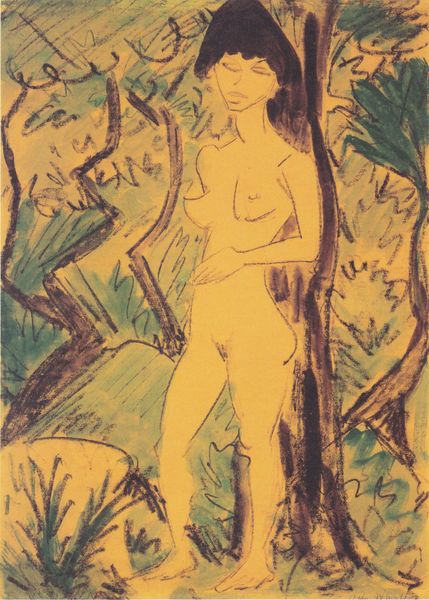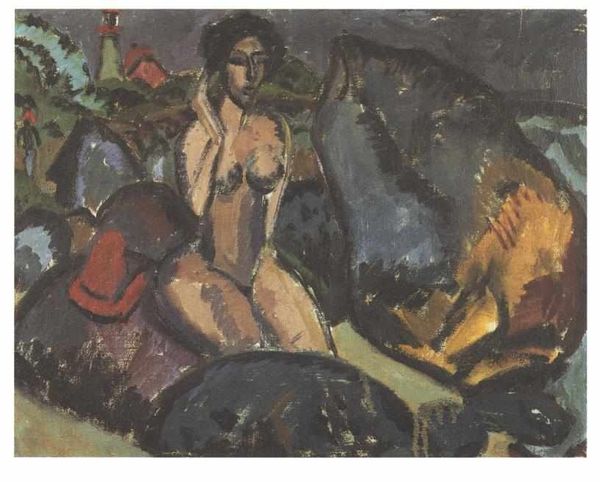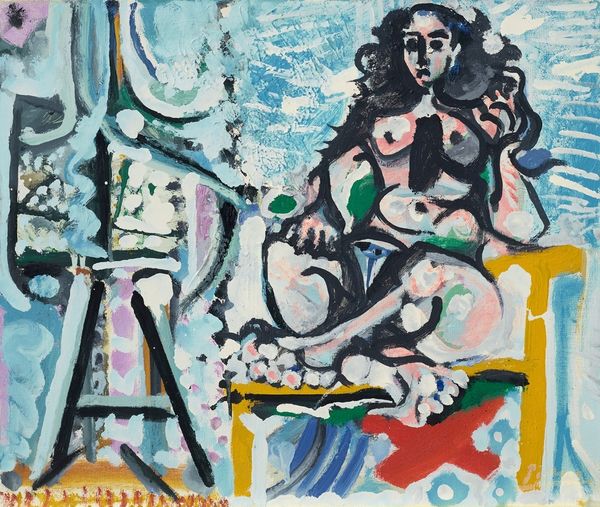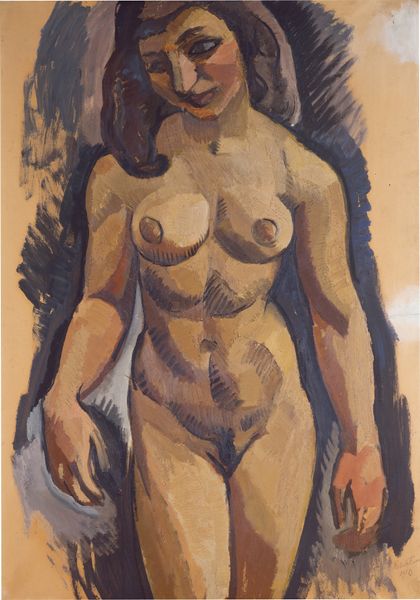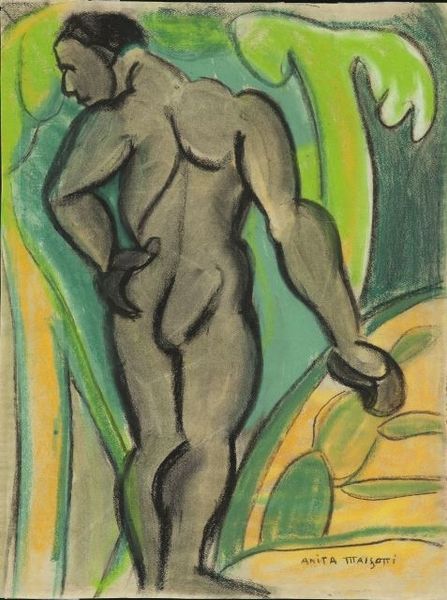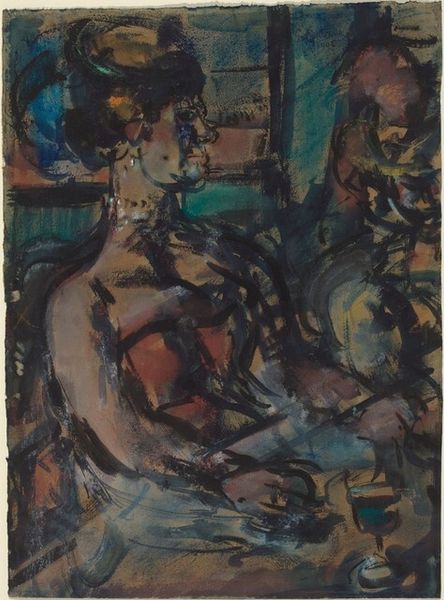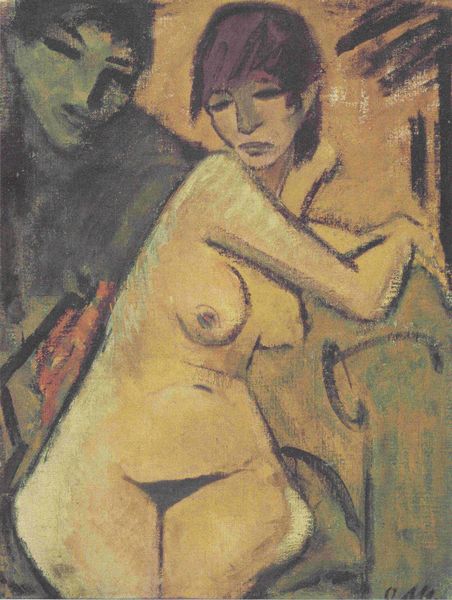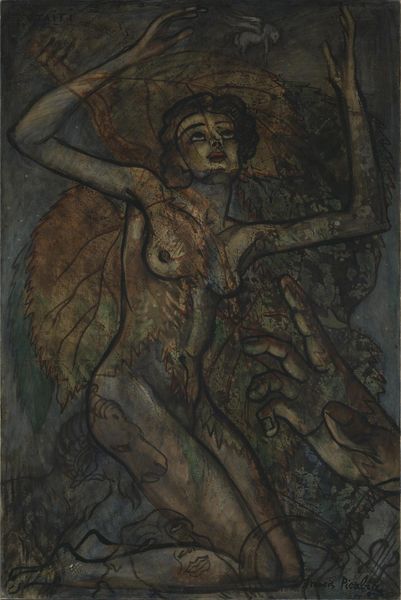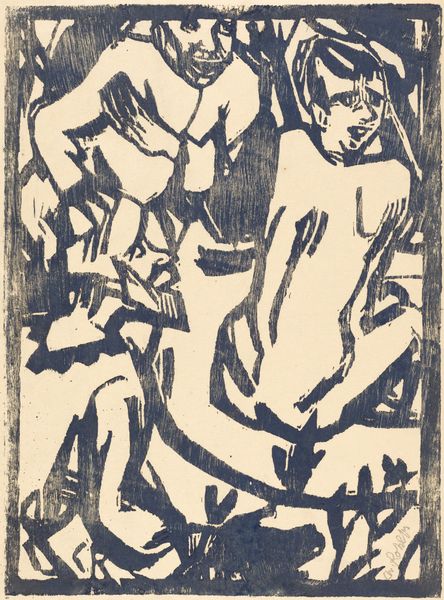
Dimensions: support: 670 x 543 mm
Copyright: © ADAGP, Paris and DACS, London 2014 | CC-BY-NC-ND 4.0 DEED, Photo: Tate
Editor: Here we have Georges Braque’s “Bather,” painted sometime in the 1920s. The figure is so stylized, almost like a statue. What do you make of the female figure in this work? Curator: Well, it’s impossible to look at a nude female figure by a male artist without considering the history of the male gaze. Braque's distortions challenge classical representations, yet we must ask, does it truly subvert or merely reconfigure objectification? Editor: That's a perspective I hadn't fully considered. So, are you saying the piece engages with gender politics? Curator: Precisely. Consider how the fragmented form might reflect the fragmented experience of women in a rapidly changing society. It’s a dialogue between form and social context. Editor: I see. It makes me rethink the painting entirely. Curator: Exactly! Art is never created in a vacuum; it’s always responding to the world around it.
Comments
Join the conversation
Join millions of artists and users on Artera today and experience the ultimate creative platform.
tate 6 months ago
⋮
In Europe the First World War was followed by a 'return to order' movement. In these years Braque, like many avant-garde artists of his generation, looked to classical models for inspiration. However, although the figure's statuesque proportions, her pose and drapes, recall ancient Greek and Roman prototypes, the painting is executed in a non-classical manner, with loosely undulating, sometimes seemingly tentative, lines and undefined areas of colour. The tension between the work's traditional subject matter and its modern style is heightened by the stark contrasts of the white drapery and green foliage against the black background, which give the work a strange, almost hallucinatory quality. Gallery label, August 2004
